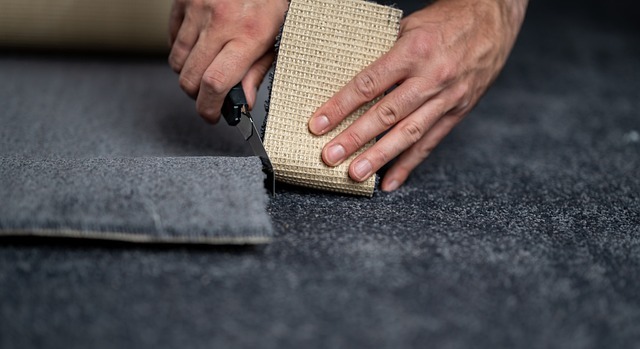Many people believe that carpet removal is a tough and back-breaking process. While there’s some truth in it, you can still make it easier. One way is to hire a professional carpet removal company.
Normally, when you want to remove furniture, you have to plan and strategize. This is unless you’re hiring a carpet removal company to do everything for you. Here are five simple and direct steps you can use to get rid of an old carpet.
Start by Removing the Baseboards
You’ll only need to do this if you’re installing laminate. You can, however, do it without removing them. Start by removing one side maybe, as this will give you enough grip. When removing the baseboards, cut the caulking using a razor blade. Thereafter, you can use a crowbar to pry it.
Begin Carpet Removal
Once you’re done removing the baseboards, it’s now time for carpet removal. This is now the trickiest part, and the part where you could break your back – literally. You’ll need to understand that carpet removal isn’t as direct and easy as lifting a rug off the floor. If anything, this is the sole reason people tend to avoid doing it themselves, and opt for carpet removal companies.
The easiest way to start is to begin from one end. Start pulling up the carpet from one corner of the room. Just avoid the prickly tack strips found close to the edges, as they could bruise you. To be safe, wear heavy work gloves.
Wondering what a tack strip is? Well this is a small piece of wood that has nails or tacks. It features during the installation of a new carpet. Thus, you may need to replace it if you want to install a new carpet afterwards.
In this carpet removal step, you’ll also need a utility knife to cut the small square out of the room’s corner. This helps you pull on the larger sections more easily when ripping up the carpet.
If you’re handling carpet removal on hardwood floors, you’ll need to be extra careful. This should be especially the case if you want to maintain the hardwood floor after carpet removal.
Remove the Carpet Pad and then Roll Up the Carpet in Strips
The carpet pad is located beneath the carpet. It’s stapled, thus, you’ll need to remove the staples during the procedure. Thereafter, you’ll need the utility knife once more to divide the carpet into strips. This makes it manageable to roll up and move.
For the average living room, you’ll easily work with a carpet rolled in thirds. When slicing the carpet, make sure that both of your hands are on the knife for safety purposes. Again, always have your gloves on at all times.
Roll up the sections of the carpet that you’ve already sliced, then hold them together using duct tape. This makes it a lot easier for carpet removal companies to pick up and drop inside the dumpster or the curb.
According to most carpet removal companies and experts, it’s advisable to rent a dumpster for such a project. Typically, a 10-yard dumpster would work well for a flooring removal project. However, if you’re to combine the carpet removal with something else, then you’d rather rent a bigger container.
Work on other areas of your house, including the closets and entry ways. Once you have the main portion of the duct taped and rolled up, you can handle all other areas.
Carpet Removal on the Stairs
Removing carpets on the stairs is the trickiest part. No wonder carpet removal experts charge extra when you have stairs. The process is to start by cutting near the risers. With your gloves on, collect the loose staples so that they don’t scatter all over the place.
Thereafter, grab the cut corner of the carpet and start pulling it up – away from the stairs. Where needed, cut the carpet into small manageable pieces.
Check and Prepare the Subfloor during Carpet Removal
Once you’re done removing the padding, you can start inspecting the subfloor. This is an important part of carpet removal, especially when you intend to install new tiles or hardwood floors.
Any possible issues with the subfloor will prove more difficult to handle once the new flooring is in. While checking the subfloor, take note of the following:
- Staples – most of the staples left behind during carpet removal come from the carpet padding. You can use your pliers or a pry bar to eject them.
- Rusted tack strips – if more than one tack strip has rust, then you should probably have a roof inspection as well.
- Sinking Floors – this may be a sign of a weak foundation that’s about to collapse or crack. If you notice this, have an inspection conducted before installing new flooring.
Final Thoughts
Handling carpet removal isn’t the easiest job on the planet, but also doesn’t have to be the hardest. If you can’t use the steps above, then consider hiring a professional carpet removal company.

